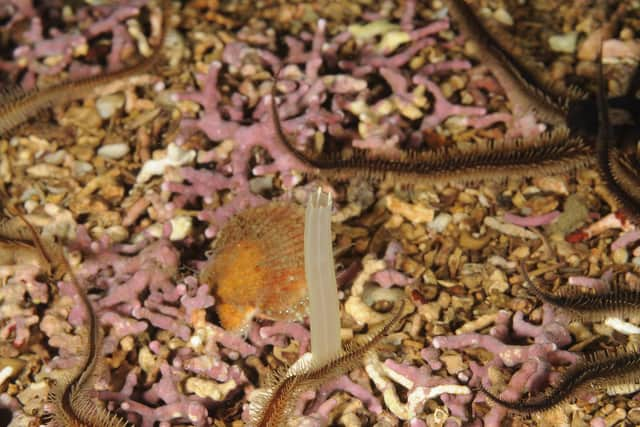Vital Scottish sealife under threat from climate change, scientists warn
New research suggests that maerl beds, one of Scotland’s priority marine features, could decline by as much as 84 per cent by 2100 if the planet continues to warm at its current rate.Maerl beds are formed from the skeletons of a red seaweed, creating astructure similar to coral reefs. They are found all over the world, but the seas around Scotland’s west coast and islands are European strongholds.The habitat provides homes and nursery grounds for other marine life – including commercially important species such as pollack, hake and scallops.Previously researchers had only conducted small-scale experiments on the maerl, meaning little was known about how the beds might respond to warming at a regional scale.Now a team of experts from the Lyell Centre, a partnership between Heriot-Watt University and the British Geological Survey, the Royal Botanic Garden Edinburgh, the University of St Andrews and national agency NatureScot has developed a computer model to project how changes to Scotland’s climate will affect maerl beds over the next 80 years.Findings show distribution will shrink by 38 per cent by 2100 in a ‘best case’ scenario, where emissions are drastically cut, and by 84 per cent if ‘business as usual’ continues.The scientists say the results show the urgent need for action to halt climate change.Professor John Baxter, honorary professor at the University of St Andrews and Heriot-Watt University, said: “We found that the biggest changes are likely to happen between now and 2050, making the need for conservation action to protect maerl beds even more urgent – not only to protect biodiversity but also their potential to capture and store blue carbon, which is important for climate change mitigation.”Cornelia Simon-Nutbrown, a PhD student at the Lyell Centre, said: “Maerl beds’ survival depends on us making major changes to our greenhouse gas emissions and protecting the beds from anthropogenic activities.”Despite large declines across the country, the team has identified key areas in the north of Scotland where maerl populations are most likely to survive – including Sutherland, Orkney and Shetland.
A message from the Editor:
Thank you for reading this story on our website. While I have your attention, I also have an important request to make of you.


The dramatic events of 2020 are having a major impact on many of our advertisers - and consequently the revenue we receive. We are now more reliant than ever on you taking out a digital subscription to support our journalism.
Subscribe to scotsman.com and enjoy unlimited access to Scottish news and information online and on our app. Visit https://www.scotsman.com/subscriptions now to sign up.
By supporting us, we are able to support you in providing trusted, fact-checked content for this website.
Joy Yates
Editorial Director
Comments
Want to join the conversation? Please or to comment on this article.